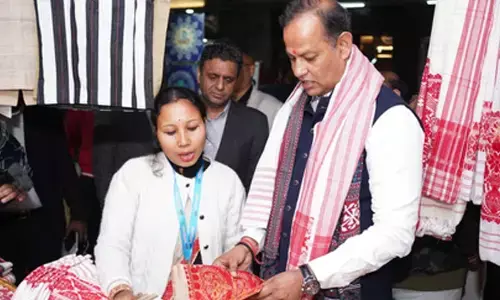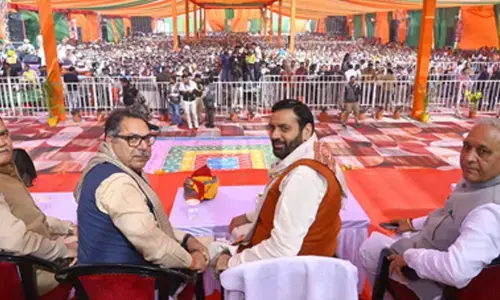Different food groups that make up a balanced diet

Pathye sati gadartasya kimaushadhanishevanaih | Pathye-asati gadartasya kimaushadhanishevanaih ||
There is no need for separate medical treatment with a wholesome diet, whereas even treatment becomes questionable with an unwholesome diet. Ayurveda considers food as ‘Mahabheshaja’ which means ‘Superior Medicine’.
We spoke to Dr Meghana Pasi, Nutrition Consultant, MyThali Program, ArogyaWorld, she says, “Nutritious food is the basic necessity of life and our diet must provide us all essential nutrients in the required amounts to keep us fit and healthy. However, we also know that our nutrient requirements do not remain the same all through our life. They vary with age, gender, physiological status and physical activity. In order to meet these requirements every day, we should know what to eat (poshan) and how much to eat (portion).”
Dr Meghana Pasi says, “According to the WHO, nearly 1 in every 3 people worldwide suffers from malnutrition, obesity, and diet- and lifestyle-related Non-Communicable Diseases (NCDs) such as type II diabetes, cardiovascular, respiratory illnesses, stroke, and some types of cancer. Unhealthy diet is the number one cause of deaths globally. A balanced and nutritious diet is therefore critical for the prevention of NCDs. The United Nations has labelled the decade of 2016–25 as the “Decade of Action on Nutrition.”
What is a balanced diet?
A balanced diet can be defined as ‘food that contains adequate nutrients required by the body to grow, remain healthy, stay disease-free and protect us against nutritional deficiencies’.
Consuming all food groups:
Cereals/grains, pulses/meat/poultry/fish, veggies-fruits, milk-milk products and fats/oils in adequate quantities makes a meal balanced.
Cereal /grains/millets :
The seeds of grasses including wheat, millet, rice, barley, oats, and corn are known as cereal grains. They are rich in carbohydrates, protein, fibre, and B vitamins and minerals such as folate, zinc, magnesium, and phosphorus which are heart healthy, help regulate blood pressure, prevent cancer, lower risk of diabetes and increase immunity. High fibre content also aids in digestive system upkeep and can help prevent constipation.
India being a Carb loving nation, major part of our plate is covered with roti and rice. But an excess of refined carbs like maida and sugar are harmful for health.
Fill only one fourth of your plate with carbs (chapati, rice, paratha, potato etc). Replace white rice and wheat with complex carbs like millets (bajra, jowar, ragi).
Vegetables and fruits:
Veggies supply a wealth of necessary vitamins and minerals in addition to being a strong source of dietary fibre. They are rich sources of potassium, folic acid, vitamin A, vitamin C and antioxidants which help in reducing inflammation, protect against chronic diseases like cancer, heart disease and diabetes.
Fruits are a great source of fibre, potassium, vitamin C, folic acid, and vitamins A. They contain antioxidants, which protect cells from free radical damage and hence reduce the risk of disease. Fruit fibre also helps to reduce the risk of certain cancers, including colorectal cancer.
Eat at least 3-4 portions of veggies and 2 portions of fruits through the day. Have fruits at mid-morning or snack-time to avoid intake of caffeine and fried foods.
Pulses & legumes/meat/fish/poultry:
Pulses and legumes are the edible seeds of plants in the legume family. The main nutrients in these pulses are carbs, proteins, B vitamins, folic Acid, calcium, iron, and fibre.
Meat and poultry are excellent sources of protein. They also supply your body with a variety of other minerals, including iodine, iron, zinc, Vit B12, and important fatty acids. Consuming fish at least twice a week has additional benefit of reduced risk of cardiovascular disease.
Have at least one serving of protein source with each meal
Milk and milk products:
Dairy products supply not just proteins but also several minerals like calcium, potassium, and vitamin D. These help in growth and development of the skeletal system and for maintenance of bones and teeth.
Have milk in any form as tea/coffee/milk shake in the morning breakfast and snack-time or as curd/ buttermilk/paneer in your lunch and dinner.
Have 3 portions of any of these through the day.
Fats and oils:
The human body needs fats for energy to perform daily tasks. The body's stored fat serves as an insulator to keep you warm. Fats are also required in cell building, protecting organs from damage and for absorption of fat-soluble vitamins A, D, E and K.
However, limit the intake of saturated fats found in butter, beef, pork, cheese and coconut oil; instead take vegetable oils, nuts and seeds and fish which are heart friendly.
Take not more than 3tsp of oil and 1tsp of ghee/butter throughout the day.
















